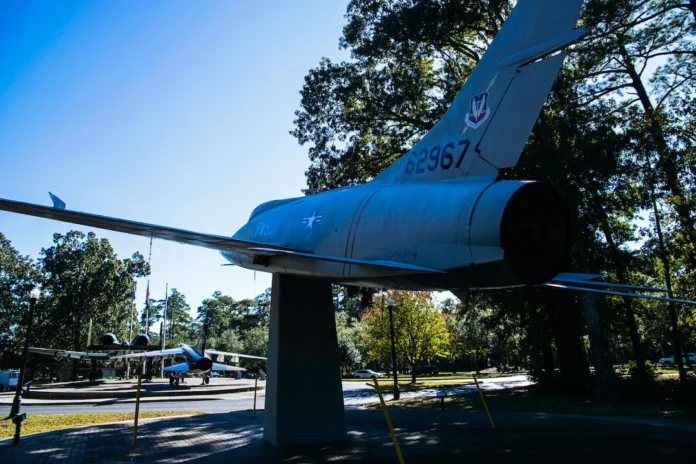In the world of aviation, identification or identifier (abbreviated as ID) plays a crucial role in ensuring the smooth and efficient operation of aircraft. It refers to the unique codes, numbers, or symbols used to distinguish and identify various elements within the aviation system. This can include airports, aircraft, sections of airspace, radio frequencies, and many other aspects of aviation. Identifiers are used for communication, navigation, and operational purposes, allowing pilots, air traffic controllers, and other aviation stakeholders to quickly and accurately identify specific entities.
Contents
Identification in Aircraft Registration
One key area where identification is crucial in aviation is aircraft registration. Each aircraft is assigned a unique identifier known as a registration number or tail number. These alphanumeric codes are typically displayed on the exterior of the aircraft, such as on the tail or fuselage, and serve as a permanent identifier throughout the entire lifespan of the aircraft.
The registration number plays a vital role in aircraft identification for various purposes. It allows aviation authorities, maintenance personnel, and air traffic controllers to identify specific aircraft, track their ownership and maintenance records, and ensure compliance with aviation regulations. The registration number is also important for incident and accident investigations, as it helps identify the aircraft involved and aids in determining the cause of incidents.
The registration number typically consists of a prefix indicating the country or region of registration, followed by a unique combination of letters and numbers. For example, in the United States, aircraft registrations start with the letter “N,” followed by a combination of letters and numbers. Other countries may use different prefixes and formats for their registration numbers.
Did you know? The registration number of an aircraft is sometimes referred to as its “tail number” due to its historical association with military aircraft, where the code was often painted on the tail.
Identification in Airport Codes
Another important aspect of identification in aviation is the use of airport codes. These three-letter codes, officially assigned by the International Air Transport Association (IATA), provide a unique identification for airports around the world. Airport codes are used in flight planning, ticketing, luggage handling, and various other aviation processes.
These codes are designed to be easily recognizable and memorable, allowing pilots, air traffic controllers, and passengers to quickly identify specific airports. For example, the code “LAX” is commonly used to identify Los Angeles International Airport, while “JFK” represents John F. Kennedy International Airport in New York.
Some airport codes may seem unrelated to the actual airport name, leading to interesting historical or linguistic connections. For instance, the code “ORD” for Chicago O’Hare International Airport is derived from its former name, Orchard Field.
Additionally, airport codes can also differentiate between airports within close proximity or with similar names. For example, London Heathrow Airport is identified with the code “LHR,” while London Gatwick Airport has the code “LGW.” This allows for precise communication and navigation, ensuring that aircraft and personnel are directed to the correct airport.
Fun Fact: The longest airport code in the world is for Taumatawhakatangihangakoauauotamateaturipukakapiki-maungahoronukupokaiwhenuakitnatahu Airport, located in New Zealand. Its code is “TUO.” While the airport’s name is incredibly long, the International Air Transport Association (IATA) limits airport codes to three letters for practicality and standardization.
Identification plays a vital role in aviation navigation and air traffic control. One important aspect is the use of flight identification codes, also known as squawk codes. These four-digit codes are assigned by air traffic control to each aircraft operating in controlled airspace.
Flight identification codes allow air traffic controllers to uniquely identify and track aircraft on radar screens. When an aircraft enters controlled airspace, the pilot is instructed to set the assigned squawk code on their transponder. This code allows air traffic control to quickly identify the aircraft and follow its progress on radar systems.
The use of flight identification codes enhances situational awareness and helps prevent collisions by ensuring proper separation between aircraft. Controllers can easily distinguish between different aircraft and issue clear instructions for navigation and altitude changes.
In addition to flight identification codes, radio frequency identification (RFID) technology is also used for identification in aviation. RFID tags or labels are attached to various aviation assets, such as baggage, equipment, and even aircraft components, to enable easy tracking and identification. These tags contain unique identifiers, allowing for efficient inventory management, maintenance tracking, and asset allocation within the aviation industry.
Furthermore, pilots also use navigation aids, such as VOR (VHF Omni-directional Range) and NDB (Non-Directional Beacon), to identify their position during flight. These navigational aids provide specific radio signals with unique identifiers that pilots can tune into and use for navigation.
Did you know? The International Civil Aviation Organization (ICAO) establishes standards and practices for aviation identification, including aircraft registration, airport codes, and flight identification codes. These standards promote global consistency and interoperability within the aviation industry.
Conclusion
In the vast realm of aviation, identification is of utmost importance. Whether it’s the registration number on an aircraft, an airport code, a flight identification code, or the use of RFID technology, identification ensures efficient communication, navigation, and safety within the aviation system. These various identifiers allow pilots, air traffic controllers, and aviation stakeholders to quickly and accurately identify and track specific entities, contributing to the overall smooth operation of the aviation industry.
So, the next time you see an aircraft with a tail number, or hear an airport code announced, remember that these identifiers play a vital role in the fascinating world of aviation.




